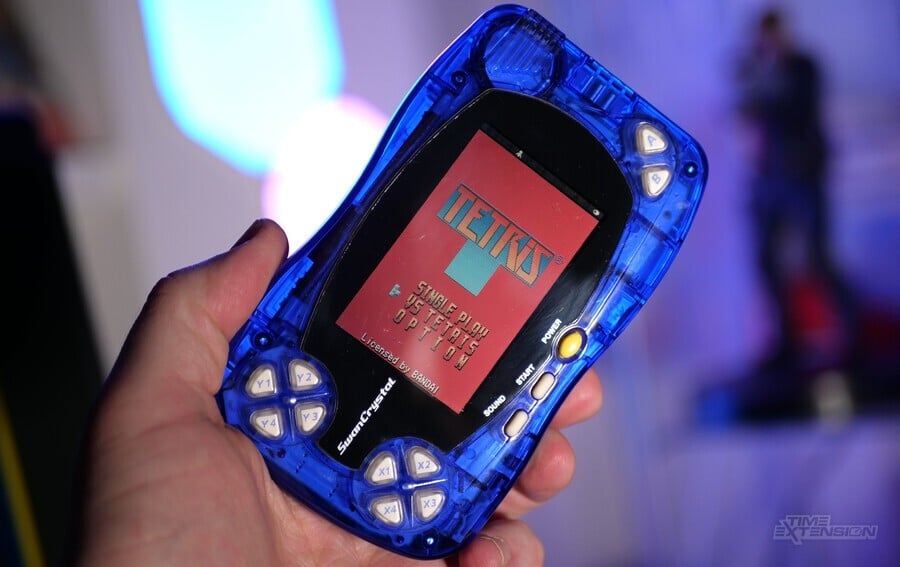
25 years ago today, Bandai released the handheld console which should, on paper, have seriously challenged the might of Nintendo's Game Boy.
The WonderSwan hit Japanese store shelves on March 4th, 1999, costing just ¥4,800 (£25 / $31). Powered by a single AA battery and boasting overall dimensions that made it even more pocket-friendly than the Game Boy Pocket, this monochrome handheld's success seemed assured thanks to one other key fact: it was designed by Gunpei Yokoi, the engineer who transformed Nintendo's fortunes with a host of smash-hit products.
Yokoi created toys (like the iconic Ultra Hand) which generated millions of dollars in revenue for the Japanese company, but it was his involvement with video games that truly made a lasting impact. Yokoi created the Game & Watch series of LCD handhelds after observing a Japanese businessman absent-mindedly tapping away on his pocket calculator on the way to work, and this range would sell millions of units all over the world, as well as establish innovations such as the cross-shaped digital pad and dual screens.
Even the amazing success of the Game & Watch line was put in the shade by Yokoi's next contribution to the world of portable gaming: the Game Boy. Backed by Yokoi's philosophy of "Lateral Thinking with Withered Technology," the monochrome portable eclipsed its more powerful rivals and, alongside the Game Boy Pocket and Game Boy Color, went on to sell over 118 million units worldwide.
However, Yokoi's final console for Nintendo – the ill-fated Virtual Boy – was a critical and commercial disaster, and this almost certainly contributed to his departure from the company on August 15th, 1996 – bringing to an end a thirty-one-year working relationship. Yokoi would establish Koto with several of his Nintendo staff and, alongside the Tamagotchi virtual pet, would help Bandai create its Game Boy killer.
Sadly, Yokoi never got the chance to see the WonderSwan make it to market. He was killed On October 4th, 1997, in a road traffic incident.
Never released outside of Japan, the WonderSwan didn't really come close to challenging the dominance of the Game Boy line, despite clocking up sales of around 3.5 million (around 10 percent of the Japanese handheld market) and attracting the support of companies such as Capcom, Namco and Square. The 1999 monochrome model was followed by the WonderSwan Color and SwanCrystal, but by the time the latter arrived in 2002, the technically superior Game Boy Advance was already available.
With its small, Japan-focused library, the WonderSwan is often overlooked in favour of the Neo Geo Pocket, which launched around the same time and arguably had a more 'accessible' selection of titles, as well as a release in both North America and Europe.
However, Bandai's console is the more commercially successful of the pair, and, 25 years after its arrival, remains well worth a look.
